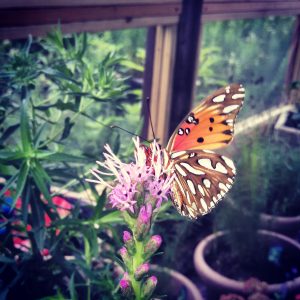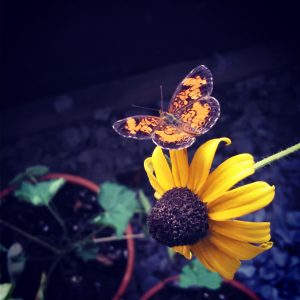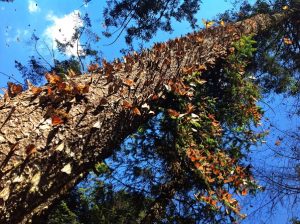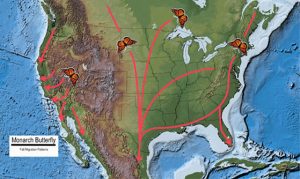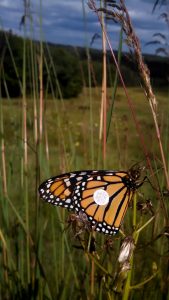This has been a big year for butterflies at Irvine!
With the opening of the new butterfly house exhibit, the animal care staff and interns have been busy raising and caring for many different native species, learning a lot along the way.
- Gulf fritillary in the butterfly house
- Pearl crescent in the butterfly house
With the approach of fall, our focus has shifted to one species in particular: the monarch butterfly!
One of the most well-known and recognized, this species of butterfly undergoes an amazing journey this time of year; monarchs across the country are migrating to their winter habitat in the mountain forests of Mexico.
While most adult butterflies only live for about two weeks, the monarchs that are born late in the season will survive for several months. They must make the flight (which for some may be up to 3,000 miles long!), spend the winter in the Sierra Madre mountains, and then start the journey back to their summer habitat the following spring.
Irvine participates in a citizen science program called Monarch Watch, run by the University of Kansas. At the end of summer, we raise, tag, and release adult monarchs. This program allows scientists to track monarch populations and better understand their migration and any challenges these butterflies face along the way.
- Monarchs covering a tree in their winter habitat
- Monarch migration patterns
How do you tag a butterfly?
Monarch Watch provides small sticker tags, each marked with an ID number and contact information. This sticker is placed on the middle of the monarch’s hindwing, which does not negatively affect the insect’s ability to fly. We record the gender of the monarch, the date it was tagged, as well as whether it was wild caught or captive raised. When a dead monarch with a tag is recovered, the person who found it can easily contact the University to report it, and they can use the information to see how far the monarch traveled!
- Monarch tagged during a program at Irvine
Want to get involved?
Citizen science programs allow everyday people to assist with important scientific research! If you are interested in getting involved with monarch rearing or tagging, check out the Monarch Watch website for more information.
